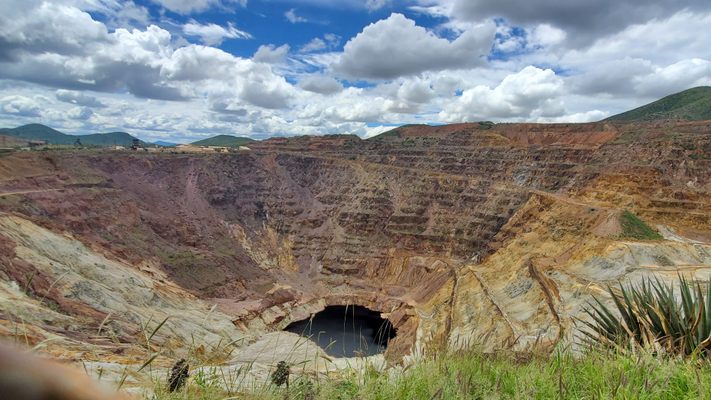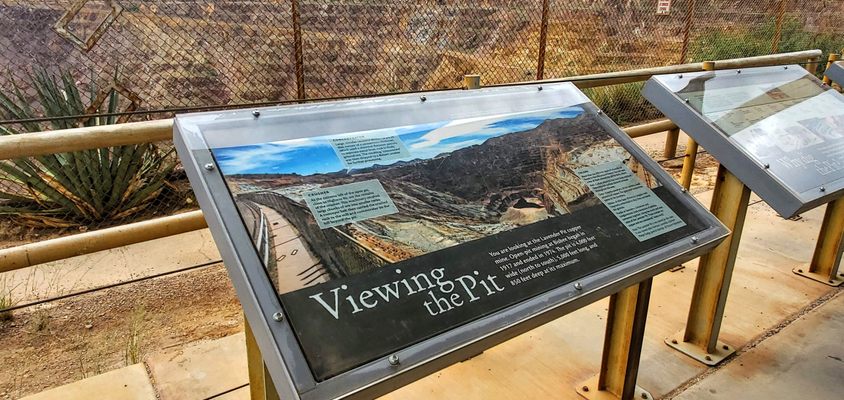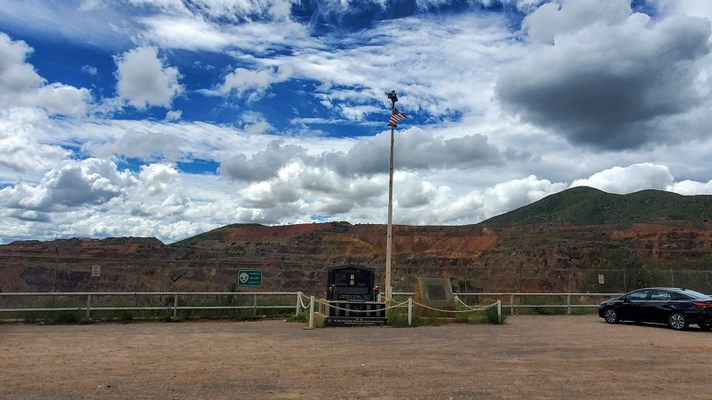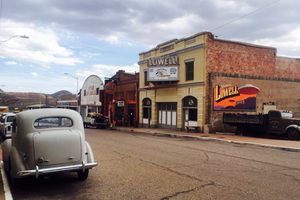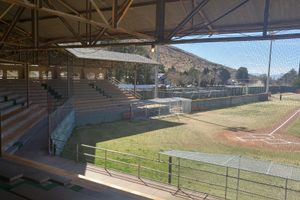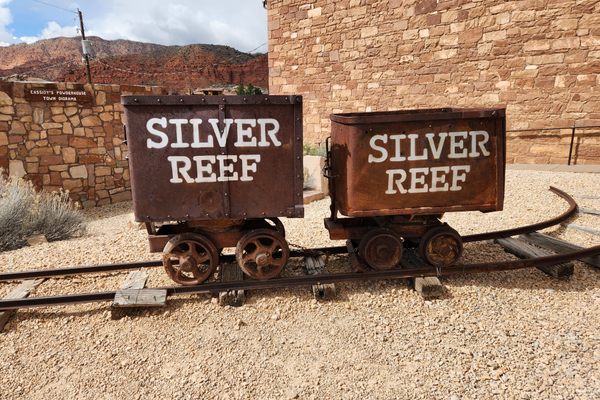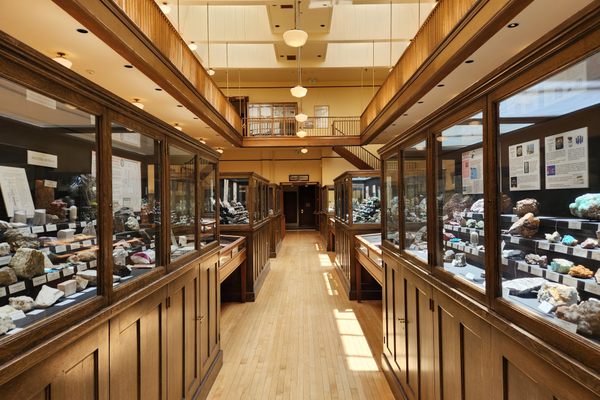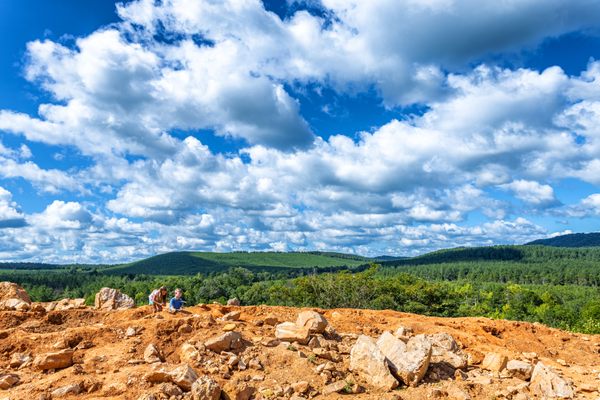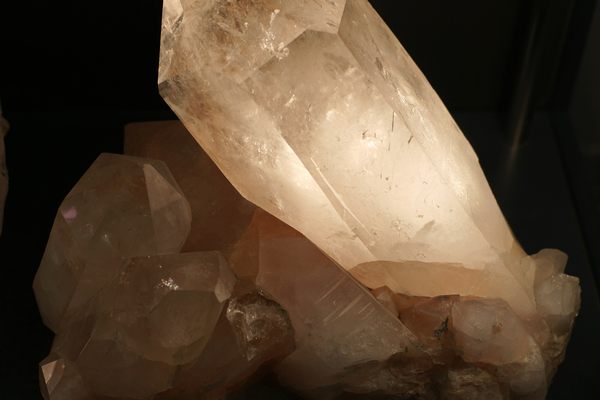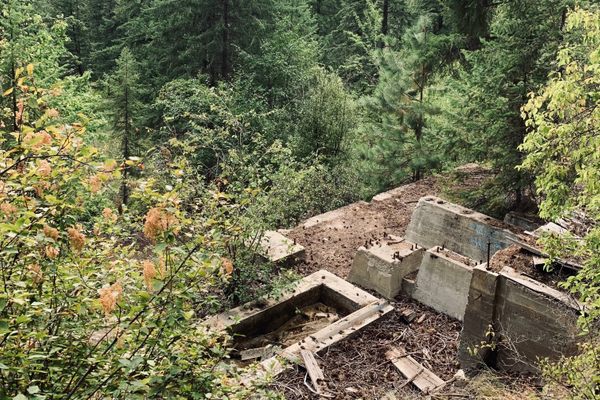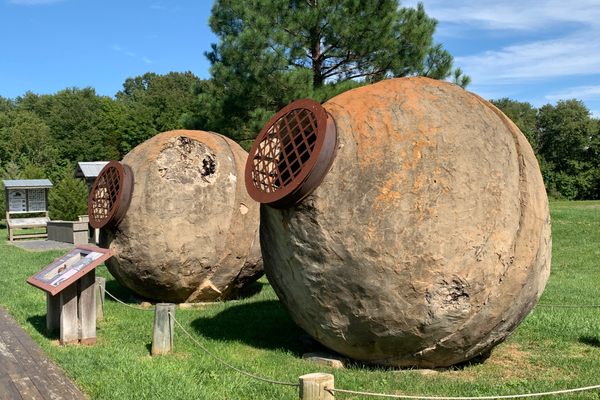About
Before Bisbee, Arizona became a center for the arts it was a mining town, and its history still permeates and scars the landscape. The most visible legacy of Bisbee’s copper mining history is the Lavender Pit, visible from an overlook on the route between Bisbee and Historic Lowell.
The name of the pit may conjure up a beautiful sunset and shades of sandstone, but the pit is actually named for mining bigwig Harrison M. Lavender. Lavender was an engineer who rose through the ranks of the Calumet & Arizona Mining Co., which was acquired by the Phelps Dodge Corp., the company that owned Bisbee’s Copper Queen mines. Lavender believed that open-pit mining was the answer to getting more copper ore from Bisbee’s low-grade rock, replacing the existing Sacramento Hill mine. The pit mine opened in 1950. Sadly, Lavender was already dying at this point. He passed away in 1952, and the pit mine was named in his honor.
The pit remained in operation through 1974. It produced more than 600,000 tons of copper, and its expansion led to the demolition of Lowell’s residential district, turning its commercial area into an eerie ghost town. Most notably, it was the home of “Bisbee blue,” a form of uniquely high-quality turquoise. In 1972, Bob Matthews was given a lease to mine turquoise and mined nearly 2,000 pounds by 1974. By then, world copper prices had crashed, and Bisbee’s low-quality copper was an early casualty. Phelps Dodge left, the mines were scuttled and closed, and Bisbee was left for dead before reinventing itself years later.
Today, the Lavender Pit is a popular tourist attraction for those headed to the border. Its turquoise remains rare, and is found in high-end galleries and mimicked in stores throughout town. Visitors to the overlook will be able to observe the pit and read interpretive signage explaining the history of the pit, and the meaning of the red, gray, yellow, and yes, lavender layers of rock that are now forever exposed to nature.
Related Tags
Know Before You Go
The Lavender Pit is closed and fenced-off. The viewing overlook is free and open to the public.
Published
September 25, 2023
